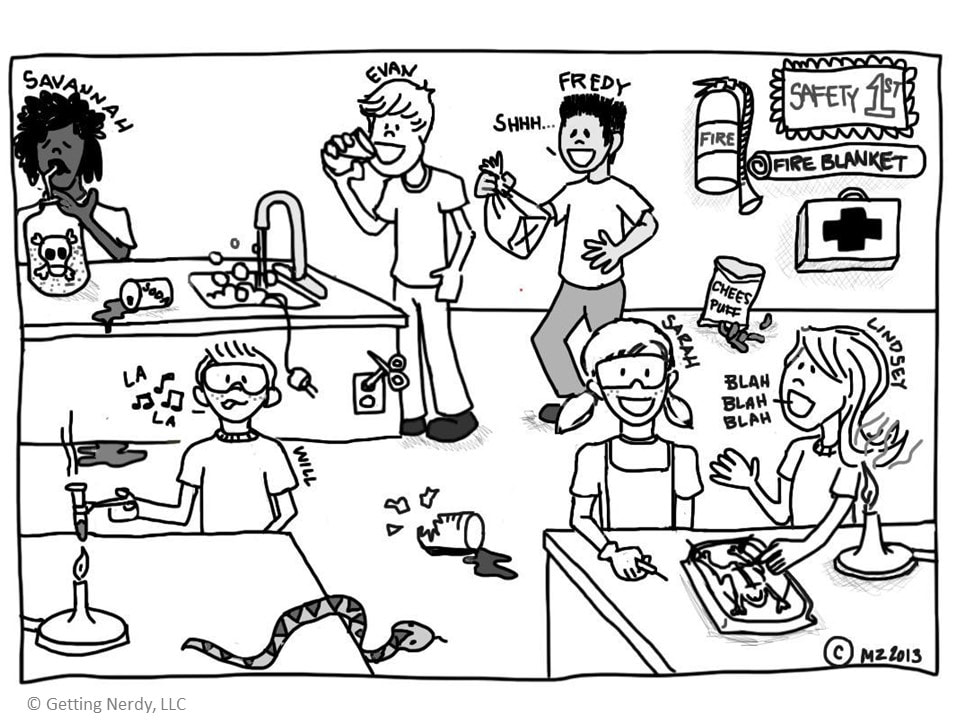Which of these is NOT a science word: testable, measurable, reliable, or opinion?
Opinion - In science, we try to set aside our own feelings, emotions, & beliefs as we collect, analyze, & share information.
Name the two types of observations scientists make.
Qualitative & quantitative
In CER, which part explains how the evidence supports the claim?
reasoning - know the definitions for all parts of CER
What words do scientists often use to organize a hypothesis?
"If...then...because"
True or False: The scientific method must happen in a specific order.
False
Which type of observation: "The solution turned blue after mixing."
List an describe the three types of variables we talked about in class.
Independent variable - the ONE thing I change at the beginning of the experiment.
Dependent variable - the Data we measure/collect
Control variable - all the things that stay the same in an experiment.
Scientific Theory or Scientific Law:
an elaborate explanation that answers how or why.
Scientific Theory
Identify one thing about the lab that is practicing good lab safety procedures. Identify one thing about the lab that is not practicing good lab safety procedures.

Lots of correct answers:
One thing that is following safety procedures: the lab has a fire extinguisher, fire blanket & first aid kit.
One thing that is not following safety procedures: Eating & drinking in the lab.
Which type of observation: "The apple weighed 152 grams."
Quantitative
Define variable.
A factor that may or may not change in an experiment.
A short explanation for a relationship that works anywhere as long as the conditions are the same.
Scientific Law
Which part of the passage describes asking a question?
Carla's dog, Ziggy, loved to play fetch. When Carla threw balls for Ziggy, she noticed that different types of balls traveled different distances. Carla wanted to know if the distance a ball traveled was related to its mass. She predicted that lighter balls would travel farther. So, Carla bought seven rubber balls that were the same size but had different masses. She used a ball launcher to launch each ball three times, using the same force with all the balls, and then she examined her results. She analyzed the data and saw that there was a relationship between ball mass & distance traveled: the lighter a ball was, the farther it traveled. She shared a description of her tests and a graph of her results with her friends at the dog park.
"Carla wanted to know if the distance a ball traveled was related to its mass."
Make an observation using this picture:
Answers may vary. Remember that an observation is something that you notice/data you collect during careful study.
One option: The tree on the left has leaves that have turned yellow.
A student was asked the following scientific question: Does fertilizer help plants grow taller?
Here is their CER response (out of order):
Statement 1: Fertilizer provides extra nutrients like nitrogen and phosphorus, which plants need to make food and build new cells. Because the fertilized plants received more nutrients, they were able to grow taller than the plants without fertilizer.
Statement 2: Fertilizer helps plants grow taller than plants without fertilizer.
Statement 3: In an experiment, plants with fertilizer grew an average of 12 cm in three weeks, while plants without fertilizer grew an average of only 7 cm.
Identify which statement is claim, evidence, and reasoning.
Statement 1 = reasoning
Statement 2 = claim
Statement 3 = evidence
Write a hypothesis for this question:
How does the temperature of a basketball (cold vs. warm) affect how high it bounces?
Remember a hypothesis can be wrong. This is about using the correct structure.
One possible hypothesis:
If a basketball is hot, then the ball will bounce higher because there will be more air pressure inside the ball (air expands as it gets warmer).
Important science skills include these three things:
asking testable questions, collecting evidence, & revising ideas
Draw four targets. Model 1. an accurate & reliable grouping 2. an accurate but unreliable grouping 3. an inaccurate but reliable grouping 4. an inaccurate & unreliable grouping
A student tests how the type of liquid (water, milk, soda) affects seed germination. Identify the independent variable, dependent variable, and one controlled variable.
IV - type of liquid
DV - (speed of) seed germination
CV - amount of liquid, type of seed, temperature the seeds are kept at
What are two things that scientific theories and laws have in common?
They are both based on observations/evidence.
Both have been tested repeatedly.
Both help make predictions about what will happen under certain conditions.